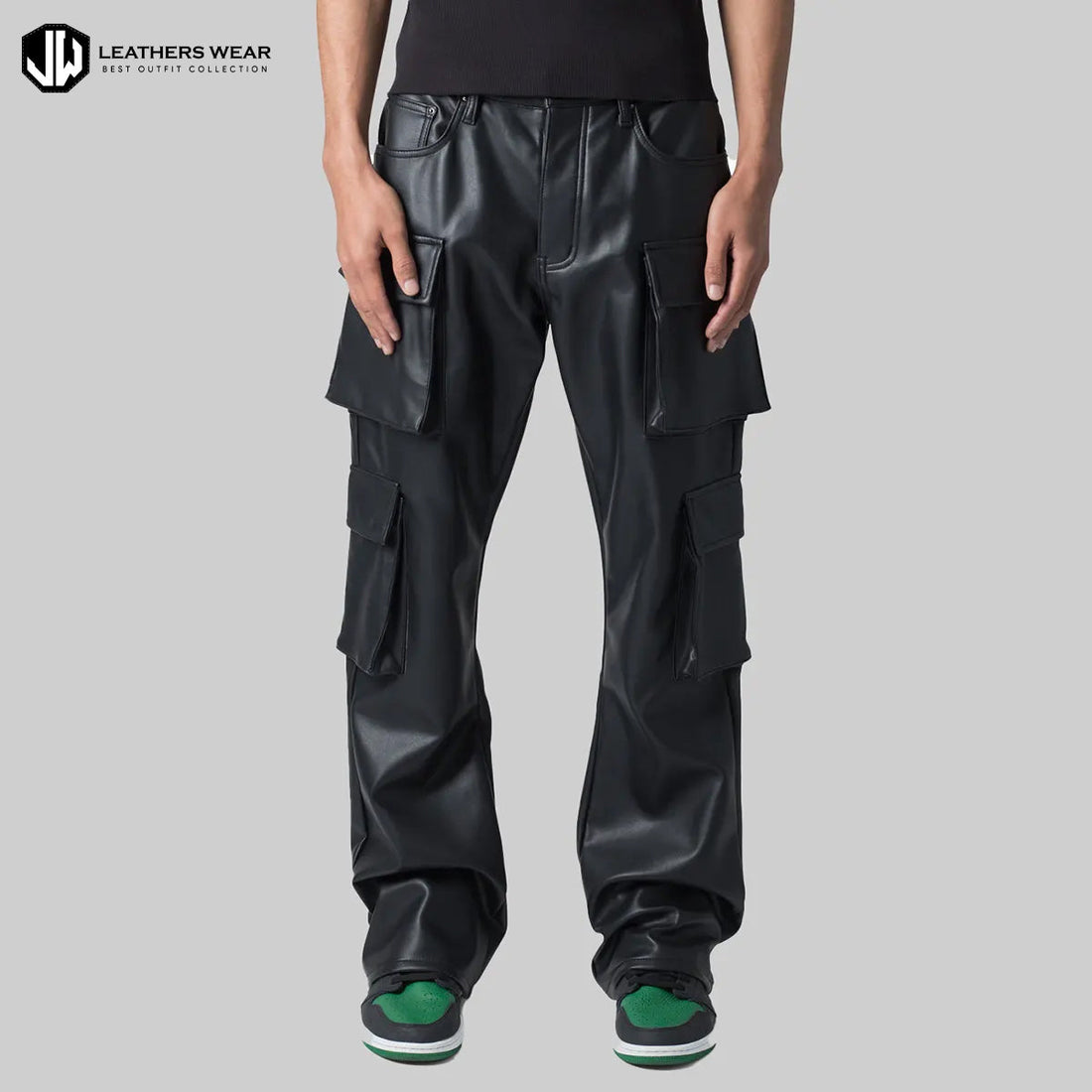
How to Choose the Perfect Fit: Men's Leather Pants Sizing Explained
Share
How to Choose the Perfect Fit: Men's Leather Pants Sizing Explained
Leather pants are more than a fashion statement—they're a symbol of style, confidence, and timeless edge. But buying the right pair can be tricky without understanding the correct sizing. In this expert guide, we’ll break down everything you need to know about how to choose the perfect fit for men’s leather pants, so you can invest wisely and look sharp from day one.
Why Fit Matters When Buying Leather Pants
Unlike denim or cotton trousers, leather doesn’t stretch much and doesn’t conform easily to your body unless designed with stretch panels or treated leather. That’s why getting the right size is crucial for comfort, mobility, and appearance. A poor fit can look awkward and feel restrictive, while a perfect fit elevates your entire outfit.
1. Know Your Measurements First
Before shopping, it’s essential to take precise measurements. Here's what you need:
-
Waist: Measure around your natural waistline (usually just above your hips).
-
Inseam: From the crotch to the bottom of your ankle.
-
Hip: Around the widest part of your hips.
-
Thigh: Measure the fullest part of your thigh for better comfort.
Pro Tip: Always compare your measurements with the brand’s sizing chart. Leather pants from Italy, the US, or Asia often follow different standards.
2. Understand the Leather Type and Fit
Different types of leather affect how the pants fit and feel. Here’s a quick breakdown:
-
Lambskin Leather: Soft, flexible, and generally offers a snug, sleek fit. Ideal for slim-fit styles.
-
Cowhide or Bison Leather: Thicker and more rigid, great for structured or straight-leg pants.
-
Stretch Leather: Some modern styles come with elastane or stretch panels for better mobility and comfort.
Fit Styles to Consider:
-
Slim Fit: Hugs the thighs and calves. Great for a fashion-forward, urban look.
-
Straight Fit: Balanced from hip to ankle. Ideal for classic or biker looks.
-
Relaxed Fit: Looser all over. Perfect for casual or oversized streetwear styles.
3. Try Before You Buy (If Possible)
Leather is a premium material—it pays to try on a pair before making a decision. When trying them on:
-
Sit down, squat, and walk around.
-
Make sure there’s no tight pulling at the knees or crotch.
-
Leather should feel snug but not suffocating.
If shopping online, check return and exchange policies, especially if it's your first leather pants purchase.
4. Consider Lining and Stretch
Some leather pants come fully lined, partially lined, or unlined.
-
Fully lined pants tend to be more comfortable but slightly less breathable.
-
Stretch linings or panels (common in biker styles) give extra flexibility.
-
If you plan to wear them for long durations or riding, opt for comfort over fashion.
5. Leather Pants Sizing Tips for Different Body Types
-
Tall Men: Look for longer inseams and slim cuts to elongate the legs.
-
Short Men: Go for cropped or tapered cuts; avoid excess bunching around the ankle.
-
Athletic Build: Look for pants with a bit more room in the thigh, or styles with stretch panels.
-
Plus Size Men: Choose relaxed or straight-fit styles for better comfort and movement.
6. Style Tips to Complement Your Leather Pants
Once you've nailed the sizing, here’s how to style them:
-
Slim-Fit Leather Pants – Pair with a fitted tee, bomber jacket, and Chelsea boots for a modern street-style look.
-
Straight-Leg Leather Pants – Match with a crisp button-down and loafers for a sleek, urban vibe.
-
Relaxed Fit – Great with oversized hoodies, sneakers, or even combat boots for a rugged look.
Conclusion
Choosing the perfect fit for men’s leather pants is a balance of style, comfort, and practicality. By understanding your body type, measuring correctly, and knowing what to look for in materials and cuts, you can confidently invest in a pair that looks as good as it feels.
